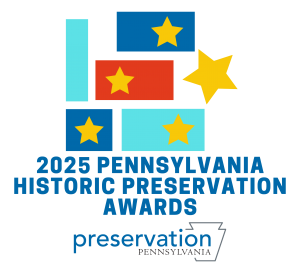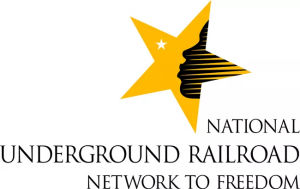Two weeks ago, the Susquehanna Discovery Center & Heritage Park Task Force, a group of local volunteers, met to celebrate the last year’s accomplishments. Almost exactly one year earlier, this same group and others had gathered on a rainy day at the Mifflin Farm to break ground for the new initial public access improvements. Now, an indoor luncheon on an equally rainy day provided an opportunity to look back and see how much has been done to elevate the stories of history, art, and nature on the property. I’m proud to share some of these highlights with you.
Our most significant accomplishment has been the opening of the Mifflin House & Farm to public visitors. Since May 24th, more than 1,000 people have stepped inside the home to learn about the freedom seekers who found refuge there and the Mifflin family who gave them shelter. One visitor wrote, “I didn’t even know this house existed! How amazing that it has been preserved.” Another remarked, “Thanks for the stories. It was the first time I had a real sense of the ‘railroad.’ It made it real! Hope you keep the story alive.” While the site will close to visitors in late October, we look forward to reopening in the spring.
Through the completion and adoption of our Master Plan & Interpretive Framework, we now have a roadmap to “keep the story alive.” Our next task is to stabilize and rehabilitate the historic home, to prepare it for a world-class Underground Railroad experience where people can develop an even deeper connection to the powerful stories that live within its walls. In September, we contracted with John Milner Architects & the Urban Heritage Project to undertake a historic structure & cultural landscape report for the property. Preparing a comprehensive history of the site is the first step in the rehabilitation process, ensuring that we have the resources we need to collaborate with architects and engineers to responsibly steward this property into the next phase of its life. This work will take us through the remainder of the year.
Since June, we have welcomed speakers to the front of the Mifflin House to share their insights into the history of the property. In June, Jamie Noerpel and Dominish Miller, of “Hometown History” provided an overview of the property’s history and the efforts to save it. Codie Eash, of Seminary Ridge Museum & Education Center discussed the importance of the burning of the Columbia-Wrightsville Bridge during the Gettysburg Campaign. Barbara Brundage, SNHA’s Interpretive Specialist, and local historian Celeste Leslie conducted an interactive program that treated participants to an understanding of how historians research the Underground Railroad. Finally, local artist and curator Rob Evans provided an overview of his life painting the Susquehanna River. Rob is the curator of a historic collection of Susquehanna River Art that will soon find a home in the new Susquehanna River Art Museum that will be integrated with the Susquehanna Discovery Center. He was joined by Spencer Evans, our summer Artist-in-Residence, who is putting the final touches on a painting depicting the Mifflin Farm on June 28, 1863, the day that elements of the Confederate Army of Northern Virginia made it to the Susquehanna River.
As you can tell, it has been a remarkable year for the Susquehanna Discovery Center & Heritage Park project at the historic Mifflin House & Farm. And this is only the beginning. We’re prepared for the work that remains to fully realize the vision of a visitor destination celebrating the nationally important stories of our two county National Heritage Area. We’re thrilled that you are on this journey with us.



 Wrightsville, PA
Wrightsville, PA